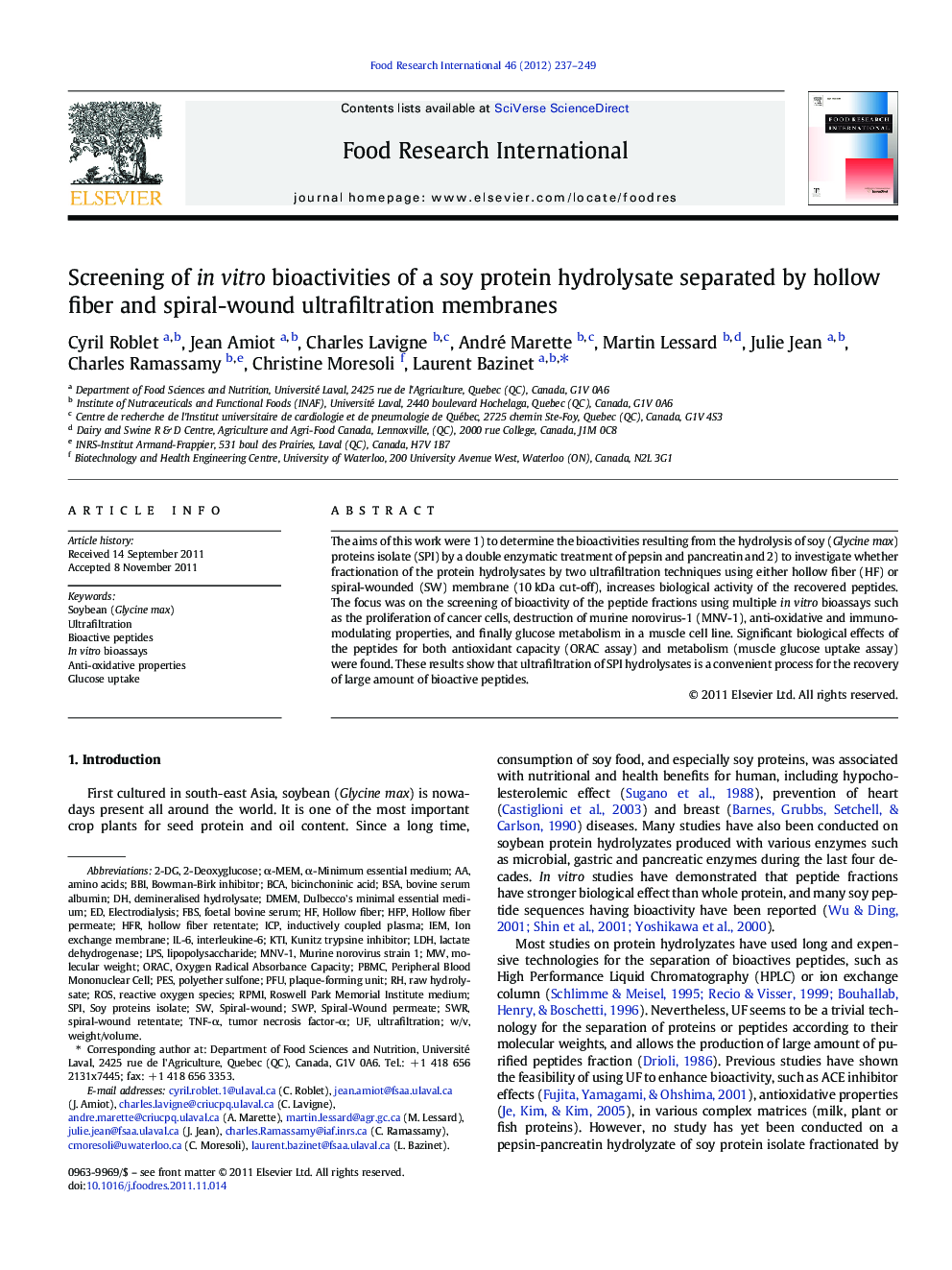| Article ID | Journal | Published Year | Pages | File Type |
|---|---|---|---|---|
| 4561908 | Food Research International | 2012 | 13 Pages |
The aims of this work were 1) to determine the bioactivities resulting from the hydrolysis of soy (Glycine max) proteins isolate (SPI) by a double enzymatic treatment of pepsin and pancreatin and 2) to investigate whether fractionation of the protein hydrolysates by two ultrafiltration techniques using either hollow fiber (HF) or spiral-wounded (SW) membrane (10 kDa cut-off), increases biological activity of the recovered peptides. The focus was on the screening of bioactivity of the peptide fractions using multiple in vitro bioassays such as the proliferation of cancer cells, destruction of murine norovirus-1 (MNV-1), anti-oxidative and immuno-modulating properties, and finally glucose metabolism in a muscle cell line. Significant biological effects of the peptides for both antioxidant capacity (ORAC assay) and metabolism (muscle glucose uptake assay) were found. These results show that ultrafiltration of SPI hydrolysates is a convenient process for the recovery of large amount of bioactive peptides.
► UF membrane configuration influences the composition of recovered fractions. ► Double enzymatic hydrolysis of soy proteins led to bioactive peptides formation. ► Only Spiral-wound UF allows the recovery of peptides increasing glucose uptake. ► Low molecular weight (MW) peptides are more antioxidant than high MW peptides.
